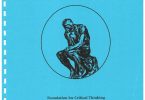Tom Haymes est maintenant consultant en technologie, mais il a été directeur des technologies pour le Houston College pendant 11 ans. Il est aussi photographe et enseignant en sciences politiques… Il signe ici un texte important que j’ai peine à synthétiser tant il est riche.
En lien avec la tendance à l’omniprésence des images que je présentais récemment à mes collègues, Haymes estime que la pensée textuelle à la base de la formation universitaire ne suffit plus pour appréhender les problèmes d’aujourd’hui. Selon les mots de Haymes, “[i]t profoundly limits the way we perceive the world to artificially linear tracks.”
Textual thinking leads us into dead ends in everything from web design to complex problem solving to deciphering our very democracy. The world is a far more complex place than it ever was. In less than a century our challenges have escalated from the local to the national to the global at a staggering rate. Our conceptual ability to cope with these challenges has not kept pace. […]
Textual narratives imply a beginning, middle, and end. Our problems today have multiple dimensions and often lack simple narrative pathways. The roots of our critical thinking failures frequently lie in text-based perceptual blinders. We fail to effectively entertain alternative viewpoints and perspectives because they don’t conform to the linear narratives we’ve been trained to follow. […]
We are in the midst of a vast array of paradigm shifts ranging from our perceptions of global ecology to what it means to be educated to the very foundations of democracy. We limit our capacity for innovative change through our reliance on linear thinking.
Selon lui, il faut donc développer la pensée visuelle chez les décideurs de demain, mais tant les étudiants que les enseignants sont assez mal équipés pour ce faire. Je ne peux assez insister sur l’importance que revêt pour moi la citation suivante (que je traduis à l’aide de DeepL.com/Translator):
Nos étudiants, bien qu’ils vivent dans un monde riche en médias, sont extrêmement peu sophistiqués dans leur façon d’aborder ce monde. C’est parce que nous leur avons enseigné en utilisant des méthodes basées sur un paradigme textuel qui fonctionne de moins en moins hors du circuit universitaire. Leur incapacité à opérer à un niveau sophistiqué dans leur approche des médias les rend susceptibles d’être manipulés par ceux qui le sont. Au cours des deux dernières décennies, la manipulation des médias a proliféré grâce à la technologie. Si nos étudiants ne maîtrisent pas la littératie visuelle, ils ne maîtriseront jamais la littératie numérique, ni d’ailleurs toute autre littératie future. [nos emphases]
(Our students, despite living in a rich media world, are extremely unsophisticated in how they approach it. This is because we have been teaching them using methods from a textual paradigm that increasingly doesn’t function well outside the Academy. Their inability to operate at a sophisticated level in their approaches to media makes them susceptible to manipulations by those who are. In the past two decades the manipulation of media has proliferated thanks to technology. If our students don’t master visual literacy, they will never master digital literacy, or any other future literacy for that matter.)
Il termine son texte en proposant que la pensée visuelle devienne une compétence de base de tous curriculums et que le design soit enseigné peu importe la discipline…
Most faculty were raised in a textual world and are ill-equipped to create visual media, much less teach others how to do it. There are exceptions, of course, but they tend to be confined to the art and design worlds. We can no longer afford to segregate skills in this manner. Institutions should either create interdisciplinary opportunities to teach design or make it a mandatory foundational course.
[…] Unfortunately, visual thinking is frequently seen in education as unsophisticated because it doesn’t conform to the dominant textual paradigm. This creates a natural handicap when it comes to producing everything from conceptual maps to emergent design concepts. Visual thinking needs to become a core competence. Otherwise we will walk blindly through our digital landscapes missing opportunity after opportunity. [nos emphases]
Considérant toutes les dimensions où le design impacte les décisions (tant en ergonomie qu’en gestion), ça ne me semble pas du tout excentrique…
Source: Haymes, Tom, “Moving from textual thinking to visual thinking“, eCampus News, 5 juin 2019





